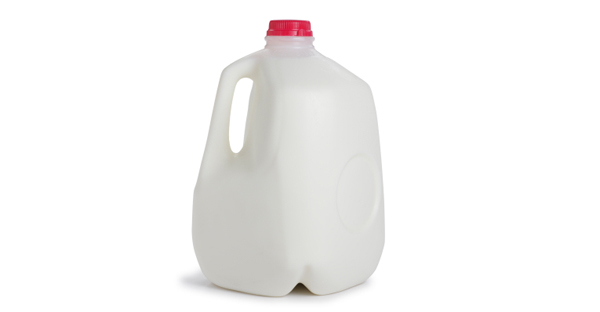Thanks to countless millions of dollars in advertising, almost everybody thinks they need milk.
Over the past several decades, cow’s milk and its byproducts have come to be seen as an essential part of the diet of most Americans. Milk and milk products such as cheese, yogurt, ice cream, whey, kefir and butter have been effectively promoted by the Unified Marketing Plan[1] with a budget in excess of $165 million a year. But this promotion hasn’t just been about advertising. Federal laws mandate that all schools will provide children with milk at each meal or face the loss of federal funds. Those responsible for this mandate have chosen to ignore the fact that up to 90 percent of African- American, 70 percent of Asian, and 15 percent of Caucasian children are unable to digest the sugar (lactose) in milk. Despite this and other controversies regarding health consequences, dairy consumption has steadily climbed since 1980. Half of all dairy consumption (per capita consumption currently exceeds 584 pounds per year) comes in the form of cheese, a super-concentrated form of health compromising saturated fat and salt. Of all the animals on the planet, people are the only creatures who routinely consume the milk products of other species. What has been assumed to be a beneficial practice is, in fact, more than merely questionable. The scientific evidence suggests that the consequences of this practice are devastating.[2] It appears likely that no other component in the modern diet causes more pain and suffering, including premature death and disability, than dairy products.
There is compelling scientific evidence that our consumption of dairy products is strongly associated with the following conditions:
- Childhood onset (type one) diabetes[3]
- Constipation[4]
- Otitus Media (ear infections)[5]
- Sinus congestion and Rhinitis[6]
- Skin problems including rashes, dermatitis, eczema, hives and acne[1]
- Asthma[8]
- Digestive disturbance (including irritable bowel syndrome and Crohn’s disease)[9]
- Arthritis and joint pain[10]
- Cancer (lymphoma, leukemia)[11]
- Obesity[12]
The Problems With Milk Are Numerous
- Milk proteins – All dairy products, especially low or non-fat dairy products, contain abundant quantities of milk proteins. Milk proteins are the most commonly implicated causal factor in promoting the diseases listed above.[13]
- Bacterial contamination – Dairy products are among the most common foods recalled by the FDA for contamination with bacteria such as salmonella, staphylococci, listeria, Ecoli 01573,and Mycobacterium paratuberculosis.[14] Pasteurization kills most of the bacteria found in milk;however, in doing so, it creates viral fragments that may also be health compromising.[15]
- Biological concentration of toxins – All animal products, including dairy products,biologically concentrate the various poisons, including pesticides and other environmental contaminants. The resulting meat or milk products have highly concentrated levels of these toxins.
- Hormones – In order to maximize milk production, dairy cows are routinely injected with recombinant bovine growth hormone (rbGH). This hormone dramatically increases milk production but also increases insulin-like growth factor-1 which has been shown to promote the growth of cancer cells.[16]
- Antibiotics – Large quantities of antibiotics are given to dairy cattle and may be contributing to the increasing problems of antibiotic resistant strains of bacteria.
- Gut leakage – Dairy proteins appear to be particularly well suited to stimulating inappropriate immunological reactions when they are absorbed through an inflamed intestinal mucosa, a process commonly called “gut leakage.” In vulnerable patients a variety of inflammatory processes are aggravated and may be associated with many of the disease processes listed above.[17]
- Environmental – The process of raising dairy cattle for milk and meat is a major user of fresh water and a leading contributor to both water and air pollution. Meat and dairy based diets are very hard on the environment.[18]
- Moral and ethical – Some people believe that the involuntary incarceration of sentient beings is morally repugnant and refuse to participate in a practice they consider immoral and unethical.
References
- Dairy Management Inc. www.dairycheckoff.com
- www.drmcdougall.com
- Work Group on Cow’s Milk Protein and Diabetes Mellitus. Infant feeding practices and their possible relationship to the etiology of diabetes mellitus. Pediatrics 94:752, 1994.
- Iacono G. Intolerance of cow’s milk and chronic constipation in children. N Engl J Med. 1998 Oct 15;339(16):1100-4.
- Juntti H. Cow’s milk allergy is associated with recurrent otitis media during childhood. Acta Otolaryngol. 1999;119(8):867-73.
- Tikkanen S. Status of children with cow’s milk allergy in infancy by 10 years of age. Acta Paediatr. 2000 Oct;89(10):1174-80.
- www.nlm.nih.gov
- Oranje AP. Natural course of cow’s milk allergy in childhood atopic eczema/dermatitis syndrome. Ann Allergy Asthma Immunol. 2002 Dec;89(6 Suppl 1):52-5.
- Bahna S. Allergies to Milk. Grune and Stratton, New York.
- www.notmilk.com/tudrmac.html
- Johnson J. Molecular biology and pathogenesis of the human T-cell leukaemia/lymphotropic virus Type-1 (HTLV-1). Int J Exp Pathol. 2001 Jun;82(3):135-47.
- Barr SI. Effects of increased consumption of fluid milk on energy and nutrient intake, body weight, and cardiovascular risk factors in healthy older adults. J Am Diet Assoc. 2000 Jul;100(7):810-7.
- Campbell, TC. The China Study.
- Lund BM. Pasteurization of milk and the heat resistance of Mycobacterium avium subsp. paratuberculosis: a critical review of the data. Int J Food Microbiol. 2002 Jul 25;77(1-2):135-45.
- Nuotio L. Eradication of enzootic bovine leukosis from Finland. Prev Vet Med. 2003 May 30;59(1-2):43-9.
- Holmes MD. Dietary correlates of plasma insulin-like growth factor I and insulin-like growth factor binding protein 3 concentrations. Cancer Epidemiol Biomarkers Prev. 2002 Sep;11(9):852-61.
- Bahna, S. Allergies to Milk. Grune and Stratton, New York.
- Robbins, J. Diet for a New America.

